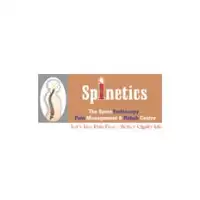Introduction FMEA training course
Failure Modes and Effects Analysis (FMEA) is a systematic method used to identify and prioritize potential failures in a process, product, or system, and to address these issues proactively. This training program is designed to provide participants with a comprehensive understanding of FMEA, including its methodology, implementation, and practical applications.
2. Training Course Content
- Introduction to FMEA
- Definition and Purpose
- Types of FMEA: Design FMEA (DFMEA) and Process FMEA (PFMEA)
- Benefits and Applications of FMEA
- FMEA Process Overview
- Detailed Steps of FMEA:
- Identifying Potential Failure Modes
- Assessing Effects of Failures
- Determining Causes of Failures
- Evaluating Existing Controls
- Calculating Risk Priority Numbers (RPN)
- Prioritizing and Implementing Actions
- Detailed Steps of FMEA:
- Preparation for FMEA
- Assembling a Cross-Functional Team
- Defining the Scope and Boundaries of the Analysis
- Collecting Relevant Data and Documentation
- Conducting FMEA
- Techniques for Identifying Failure Modes
- Analyzing Effects and Causes
- Reviewing and Evaluating Existing Controls
- Calculating and Interpreting Risk Priority Numbers (RPN)
- Action Planning and Implementation
- Developing Action Plans to Address High-Priority Failure Modes
- Assigning Responsibilities and Tracking Progress
- Monitoring Effectiveness and Conducting Reviews
- Case Studies and Examples
- Examination of Successful FMEA Implementations
- Interactive Exercises for Practical Application
- Tools and Software for FMEA
- Introduction to FMEA Templates and Their Usage
- Overview of Software Tools that Facilitate FMEA
- Best Practices and Common Pitfalls
- Tips for Effective FMEA Implementation
- Common Mistakes and How to Overcome Challenges
- Summary and Q&A
- Recap of Key Concepts and Takeaways
- Open Discussion and Addressing Specific Concerns
- Evaluation and Feedback
- Assessing Participants’ Understanding
- Collecting Feedback to Improve Future Training
3. Training Methodology
- Interactive Lectures: Detailed presentations on FMEA concepts, processes, and best practices.
- Hands-On Exercises: Practical exercises to apply FMEA techniques to real-life scenarios.
- Case Studies: Analysis of real-world examples to understand successful FMEA implementations and outcomes.
- Group Discussions: Facilitated discussions to encourage participant engagement and knowledge sharing.
- Software Demonstrations: Introduction to FMEA tools and software to streamline the analysis process.
- Q&A Sessions: Opportunities for participants to ask questions and clarify doubts.
4. Training Deliverables
- Comprehensive Training Materials: Detailed handouts, slides, and reference guides on FMEA concepts and processes.
- FMEA Templates: Standard templates for documenting and analyzing failure modes, effects, and risks.
- Case Study Reports: Summaries of real-world FMEA applications and outcomes.
- Certification of Completion: A certificate acknowledging the participant’s successful completion of the training program.
- Access to Online Resources: Additional resources and tools for ongoing learning and application.
5. Objectives
- Understand FMEA Fundamentals: Gain a thorough understanding of FMEA, including its purpose, types, and benefits.
- Learn FMEA Methodology: Master the step-by-step process of conducting FMEA, from identifying failure modes to implementing improvements.
- Apply FMEA Techniques: Develop practical skills in applying FMEA techniques to real-life scenarios and processes.
- Enhance Risk Management: Learn how to use FMEA to improve risk management and enhance product/process reliability.
- Implement Best Practices: Discover best practices and avoid common pitfalls in FMEA implementation.
6. Duration
The FMEA training program is designed to be comprehensive and engaging, typically spanning 2 days. The course includes:
- Day 1: Introduction to FMEA, FMEA Process Overview, Preparation, and Conducting FMEA.
- Day 2: Action Planning, Case Studies, Tools and Software, Best Practices, Summary, and Evaluation.
The duration can be adjusted based on the specific needs of the organization and the depth of coverage required. The training can be conducted in-person or virtually to accommodate different preferences and logistical considerations.
Who should attend Training
- Quality assurance professionals
- Engineers
- Manufacturing personnel
- Production managers
- Anyone responsible for designing, developing, or improving products or processes.
Our Clients


























































